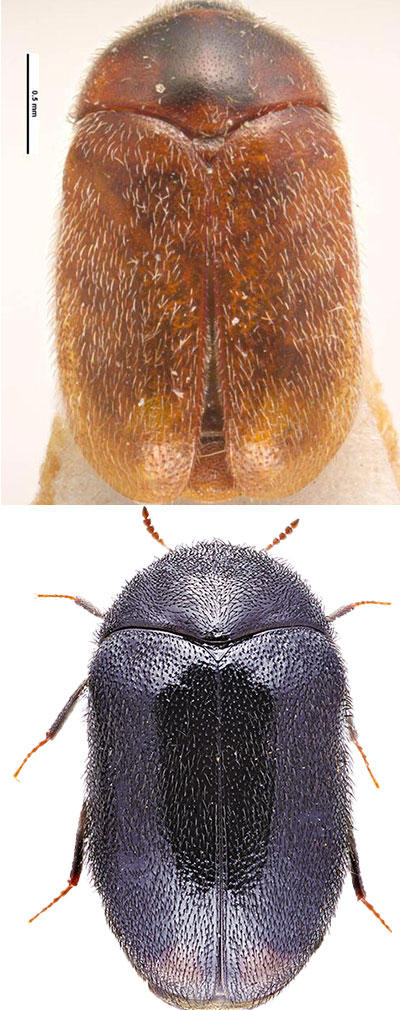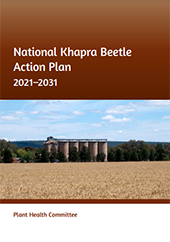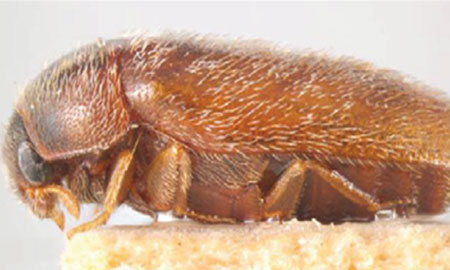Khapra beetle (Trogoderma granarium) is Australia’s number 2 National Priority Plant Pest.
It is a pest of stored grain, nuts and dry foodstuffs worldwide. If Khapra beetle established here it would pose a major threat to our grains industry.
The National Khapra Beetle Action Plan 2021–2031 is a nationally agreed approach to:
- prevent the introduction of Khapra beetle
- prepare for a response if detected.
Success of the plan depends on cooperation and collaboration between stakeholders. These include:
- importers
- shipping businesses
- agricultural industries
- all levels of government
- non-government organisations
- individuals
- experts and research agencies.
National Khapra Beetle Action Plan 2021-2031
What it covers
The National Khapra Beetle Action Plan covers the Trogoderma granarium species. The plan may help us prevent and respond to other exotic species of Trogoderma.
Implementation schedule
Each national action plan has an implementation schedule for actions and projects.
The plan involves more than 60 projects and business-as-usual activities.
Khapra Beetle Implementation Schedule 2023
Action areas
The National Khapra Beetle Action Plan focuses on 4 action areas:
- prevention
- detection
- response
- cross-cutting (contains actions that fit into 2 or more of the first 3 areas).
Projects and activities
Example areas that projects and activities focus on include:
- pest risk assessments
- improving hygiene of shipping containers
- detection of high-risk containers
- improving diagnostic tests and tools
- testing surveillance methods and response protocols.
We review activities annually and document progress.
Research highlight

Diagnosing dermestids of biosecurity interest
Trogoderma species belong to a family of beetles known as dermestids. This includes skin beetles, larder beetle, hide or leather beetles, carpet beetles, and Khapra beetle. Khapra beetle is also known as the cabinet beetle. Dermestids pose a biosecurity risk to Australia.
CSIRO researchers developed new classification tools such as keys and molecular DNA barcodes. This will help identify beetles that are in the Dermestid family.
This project will help us differentiate between dermestids that pose a biosecurity risk and native species present in Australia.
Khapra beetle (top) and a native dermestid beetle (bottom).
Simon Hinkley & Ken Walker, Museum Victoria. CSIRO, Zhenhua Liu
Completed projects
Area: Prevention
- Measures for plant products under the Khapra beetle urgent actions
- Methodologies and documents for biosecurity treatments
- Guide to treating sea containers with deltamethrin.
Area: Detection
Get involved
Are you a researcher, industry member or interested person? If you’d like to get involved email us at plantpestpreparedness@aff.gov.au
Subscribe
Keep up to date with our biosecurity news.
See more
- Khapra beetle bulletin
- Khapra beetle in imported goods
- Urgent actions to protect against Khapra beetle.


